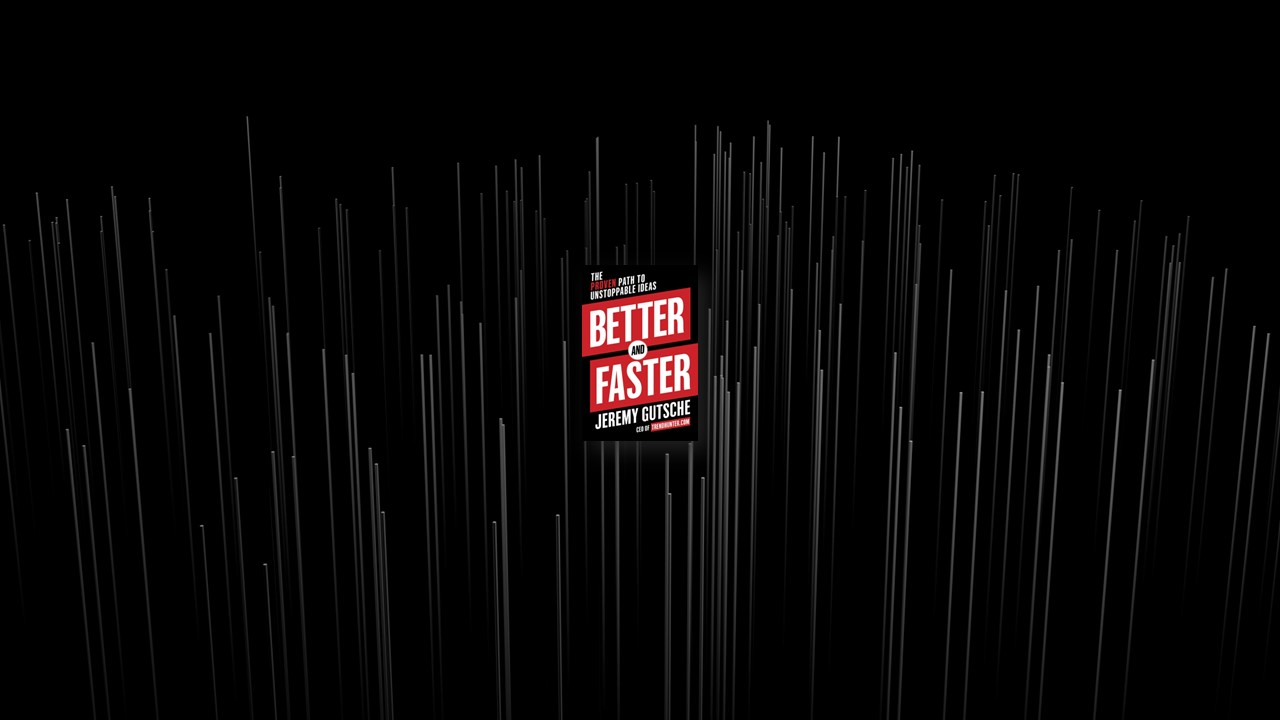The Hunter and the Farmer
Everyone farms. Your “field” might be your job, your product, or your brand, but reflexively, when you find a fertile field, you farm. Your neurological preferences take over and you become protective of your craft, digging in for what you hope will be a repeat of the prior harvest.
While this tendency served us well for the last ten thousand years, it leaves us unprepared for today’s era of rapid change. To break free, we need to better understand our farming bias and learn how to awaken our inner hunter.
Getting Momentum on Your Side
Specifically, there are six major patterns of opportunity that are created by nearly every major breakthrough product. Thus, you can use these patterns to predict or uncover future business opportunities that will be indirectly fueled by a burgeoning megatrend associated with that product.
Once you learn all six patterns of opportunity, you’ll be more adept at spotting how winning business ideas get created, making you a better innovator, decision maker, and investor.
#1 Convergence
CONVERGENCE: Creating a winning business or product by combining multiple products, services, or trends. Includes: mixing, product integration, social integration, bringing people together, adding value through layering, drama, multifunctions, and co-branding.
- Chaos Creates Opportunity Adversity can be liberating, because it frees us from the obligation of our set path, awakening our inner hunter.
- Multiply Your Odds of Success By aligning with multiple trends, you can increase your reach and potential, capturing incremental customers and attention.
- Your Future May Dwell in the Past New technologies and ideas often flourish by borrowing aspects of proven past ideas, creating ingenious products and services.
- Don’t Ignore the Fringe So-called establishment institutions often teach us that little value comes from the fringe, but outlaw culture and avant-garde culture often inspire great ideas.
- Combine to Create Something New Marrying two ideas often yields something unexpectedly new, such as the many evolutions of GPS combinations. Search for concepts that can be woven together.
#2 Divergence
DIVERGENCE: Products and services designed to oppose or break free from the mainstream. This opportunity pattern extends beyond rebellion to include personalization, customization, status, and luxury.
- Popular and Cool Are Different Too often, people mistakenly pursue what’s already popular. Popular is mainstream. It’s crowded with competitors and, crucially, it’s something that has already happened. Competitive advantage comes from searching for something cool, which is effectively the next big thing.
- Identify the Mainstream (to Repel It) Increasingly, people are expecting products and services that reflect their unique personalities. There’s a natural desire to diverge from the mainstream. For example, by taking the less popular route, UglyDoll differentiated itself as art and personal expression.
- Be Irresistible to a Specific Group of People Invoke deep passion in one group. BeautifulPeople.com offends many people, but to those who love it, the following is cult-like. Remember, your product does not need to test well with everyone.
- Your Greatest Weakness Can Be Your Greatest Strength Red Bull became one of the most successful beverages in the world despite tasting horrible, proving that not everything has to be perfect and that disadvantage can be remarketed into advantage.
#3 Cyclicality
CYCLICALITY: Predictably recurring opportunities. Includes: retro, nostalgia, economic cycles, seasonality, generational patterns, and repetitive cycles.
- Expect Repetition Many people fail to adapt to cyclical patterns, but if you expect repetition, you can open your mind to the clues that will lead to opportunity.
- Act Quickly By definition, cyclical opportunities are fleeting. To win, you’ll need to move fast when you sense an opening, just as Shu Uemura’s designer prototyped diamond lashes in a single day and the company then turned a publicity stunt into a hit product.
- Anticipate the Certainty of Evolution It’s easy to get swept up in current, well-planned scenarios and the comfort of the status quo, but preparing for what’s next can produce an asymmetric advantage.
- Look Beyond What Others Already See We tend to see what’s immediate, such as the collapse or surge of prices in a stock market. But major forces create cascading effects. As an economic cycle unfolds, many smaller opportunities gradually present themselves. You need to go where the opportunity will be next, not where it is.
#4 Redirection
REDIRECTION: The art of channeling the power of a trend, behavior, or demonstration of need instead of fighting it. Includes: refocusing, reprioritizing, rationalizing, reversing, and gamifying.
- Don’t Fight a Force If You Can Rechannel It With redirection, you aren’t following a trend or opposing it. You’re shifting focus to your advantage and then capitalizing on the momentum. It can be an easier, more effective tool for navigating bad PR or other difficult situations.
- Gamify Intended Behavior If your challenge requires a shift in human behavior, consider the effectiveness of gaming. People love to play and are already familiar with dozens of gaming models and scenarios. Gamifying is a convenient and effective shortcut to redirection.
- Master the Art of Spin Politicians have long used subtle forms of redirection under the label “spin,” taking a controversy or a public outcry and channeling it in a direction more helpful to their campaign. Companies and entrepreneurs have the same opportunity, but often they miss out because, at first glance, the counterintuitive approach is more difficult to spot.
#5 Reduction
REDUCTION: Simplifying a business concept or focusing it more on a specific idea. Includes: specialization, removing layers and steps, fractioning, crowd-sourcing, subscriptions, localization, and efficiency.
- Find a Little Idea You don’t need to find a big idea. You can also find a little idea that can be made big. That could mean something fractional, smaller, simpler, or more focused.
- Map Specific Pain Points Most great ideas solve an existing problem. By thinking through the pains and problems of those in your niche, you can map out unique areas of opportunity.
- Remove the Layers That Separate Supply and Demand The cost structure of a business is often bloated by markups charged by suppliers and middlemen. Identify the extra layers, and you can create value through simplification.
- Isolate Niche Pockets of People It’s become easier than ever to find niche pockets of similar-minded people. Josh Opperman, as we’ve seen, discovered a multimillion-dollar business in something as seemingly small as broken-hearted former fiancés.
- Be Number One (Even If It’s in a Small Group or Category) Being number one in a small market can lead to a deep connection with a homogeneous group of people who can become active ambassadors and open up a world of possibilities.
#6 Acceleration
ACCELERATION: Identifying a critical feature of a business or product and dramatically enhancing that element. Includes: perfection, aspirational positioning, exaggerated features, and reimagined solutions.
- Pinpoint Why Something Is Great To accelerate an idea, pinpoint the feature people enjoy the most, and then set out to improve that feature.
- Create Distance from the Competition To create something remarkable, it’s critical to be perceived as significantly different.
- You Can Accelerate Something Small. Simply find an idea or your inspiration and take it to the next level with a product or service that fully engages a consumer need.


